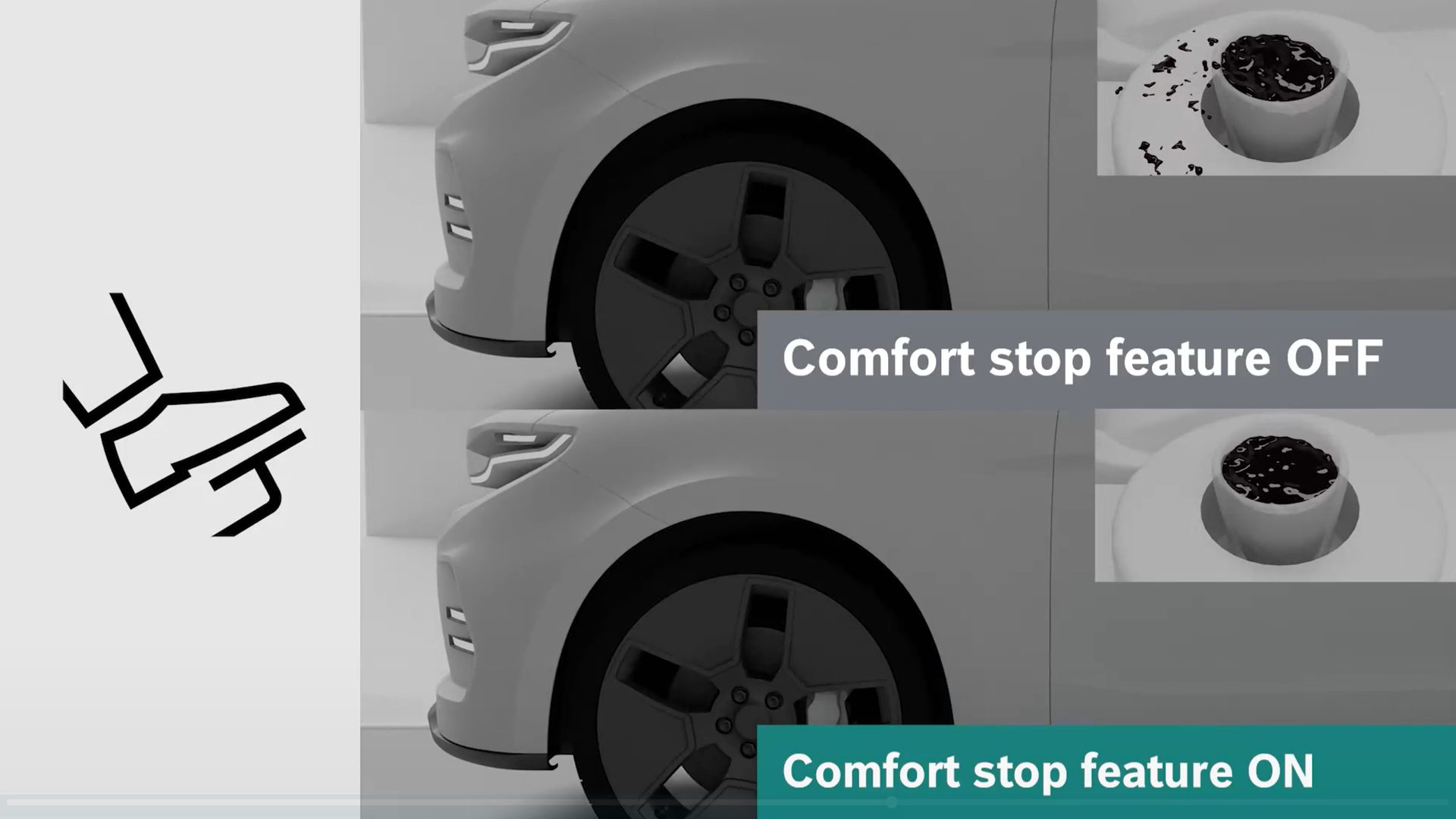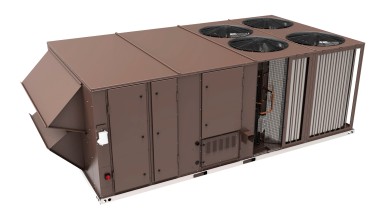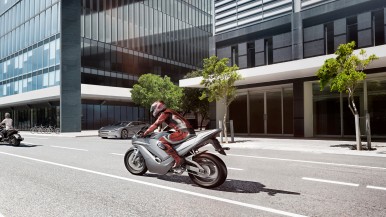Farmington Hills, Mich. – Nothing ruins a ride faster than a sudden jolt at a stoplight. That jerk forward, the “head-bob” that can make passengers queasy, is a common complaint in everyday commuting. In fact, one-third of Americans report motion-related discomfort as passengers (according to the National Institute of Health); it’s a problem many drivers don’t even realize they’re creating.
The new Bosch comfort stop feature aims to address this issue. By using intelligent software to gently manage the last portion before a vehicle comes to a complete standstill, the comfort stop feature delivers braking that feels more like a chauffeured ride than a jerky commute. Resulting in possible decrease in motion sickness and fatigue, and a calmer drive experience. As vehicles become increasingly electrified and automated, this kind of seamless stopping is more than a comfort feature, it unlocks the many opportunities of software-driven mobility.
Software at the Wheel End
At the heart of the comfort stop feature is intelligent software. By coordinating signals from braking systems, drivetrain controls and vehicle dynamics software, comfort stop feature is designed to precisely manage the final moments at the end of stop. This software-driven approach allows automakers to integrate the comfort stop feature across powertrains, vehicle classes and segments.
How It Works
The comfort stop feature is supported across Bosch decoupled braking architectures. Drivers maintain steady pressure on the brake, while the system subtly manages the final moments of bringing the vehicle to standstill.
The comfort stop feature offers two technical solutions: one using a conventional friction brake system and the other harnessing electric motors in battery-electric vehicles.
Benefits of each variant may include:
- Achieving up to a 70%–90% reduction in end-of-stop jerk compared to conventional braking (numbers are based on a comparison with the deactivated state of the function in the same vehicle and driving maneuver)
- Increased passenger comfort, especially in stop-and-go traffic
- A smoother overall experience during commutes and daily driving
Passengers Notice a Difference
To validate these results, Bosch invited 65 consumers, from backseat passengers to seasoned drivers, to experience the comfort stop feature firsthand. Participants in the user experience study said the smoother braking made stopping noticeably more comfortable, further supporting that the comfort stop feature delivers a better in-car experience as Bosch brings this feature to the U.S. market.
- “I have severe motion sickness, and this would really help me!” – adult driver
- “You don’t have to feel the pressure of the seatbelt which gives me confidence.” – adult driver
- “It’s like landing on a cloud.” – adult driver
- “Awesome with an exclamation point!” – child passenger
Built for the Future of Mobility
The comfort stop feature is built on the Bosch Vehicle Motion Management software stack, a next-generation platform that bridges physical components with intelligent motion control systems. This architecture enables automakers to add features such as smoother braking or more responsive steering through software, including over-the-air updates.
“The comfort stop feature helps redefine what it means to bring a vehicle to a complete standstill,” said Christian Sperrle, Director of product management for Vehicle Motion, Bosch Mobility Americas. “By smoothing the final phase of braking through advanced software coordination, we’re helping to enhance ride quality, deliver greater comfort, and set a new benchmark for driver and passenger experiences.”
In electric vehicles, the comfort stop feature coordinates with regenerative braking to maximize energy recovery while maintaining a comfortable stop. For automated driving, bringing a vehicle smoothly and predictably to a standstill is an important factor in building user trust and acceptance.
The comfort stop feature is one part of the larger Bosch Vehicle Motion Management ecosystem. This software-defined approach enables automakers to scale advanced motion control across vehicle classes, from passenger cars to light commercial vehicles and autonomous fleets.
For more information on Bosch mobility visit the website here.






